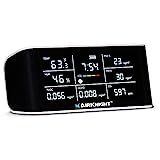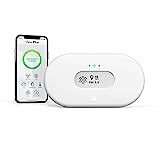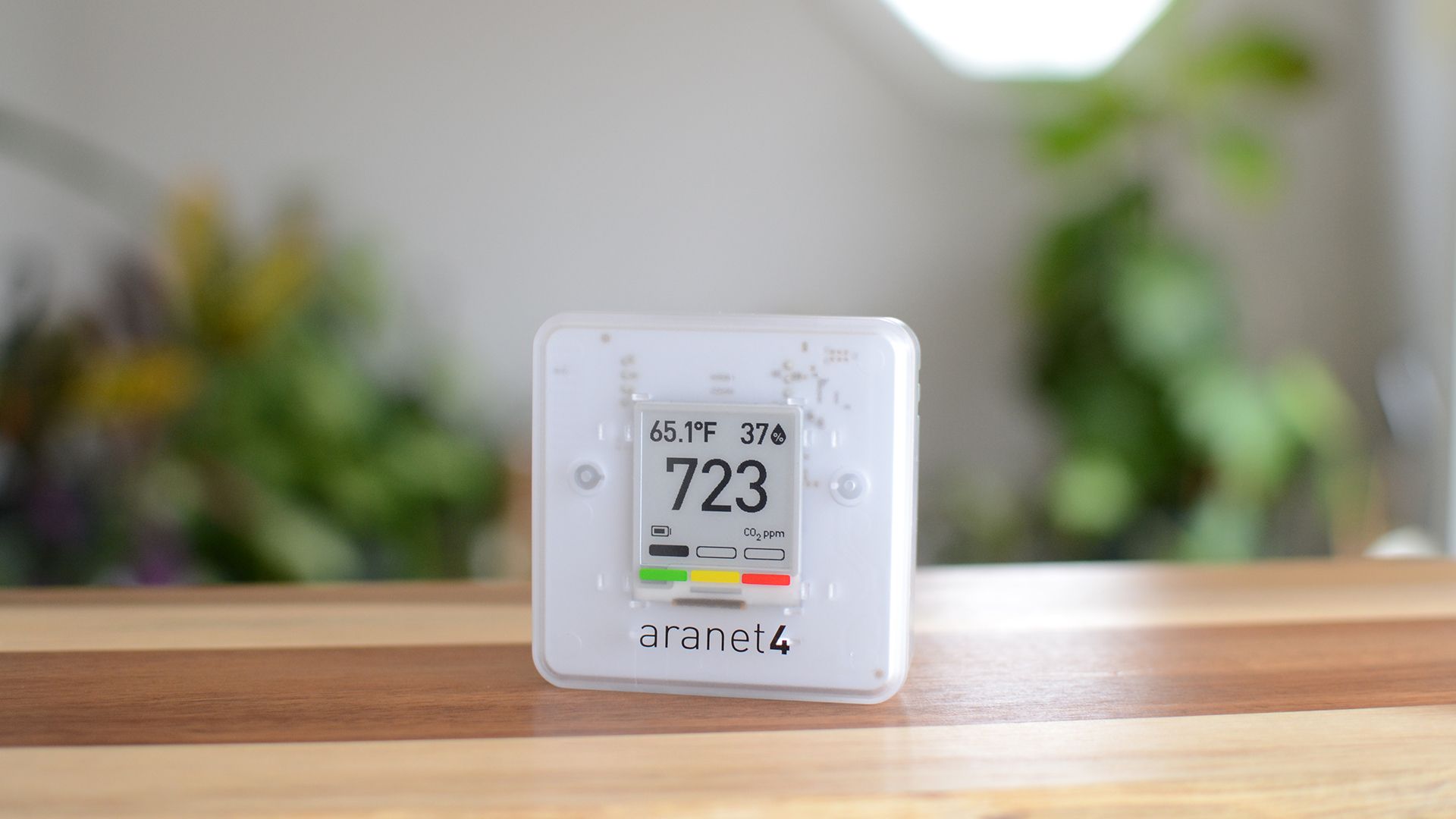Quick Links
Key Takeaways
The air you breathe in your home or office can put you at risk of serious health problems, making indoor air quality monitors worth the investment. They can determine the level of common pollutants in the air, allowing you to eliminate them and live healthier.
Air quality monitors have gained popularity as people have become more conscious of the air they breathe in their homes and offices. But what do air quality monitors do, and are they useful? Here's all you need to know.
What Is an Air Quality Monitor?
An air quality monitor is a device that measures the pollutants in its surrounding air and helps you understand the quality of the air that you are breathing. You will find both indoor and outdoor air quality monitors on the market. While outdoor air quality monitors are primarily used by industrial operators, governmental organizations, and watch groups, homeowners and businesses use indoor monitors.
Air quality monitors are also sometimes called air sensors, air pollutant monitors, and air pollutant detectors.
Different air quality monitors have different capabilities. For example, some can only detect a specific contaminant, while others can detect multiple pollutants and even environmental factors.
Air quality monitors also typically include a display to show their readings. But others ditch the screen in favor of a smartphone app.
How Do Indoor Air Quality Monitors Work?
Indoor air quality monitors are equipped with different sensors, depending on which pollutants and environmental factors they're meant to detect. These sensors take readings from the surrounding air and present them on the screen or the linked app in real time.
You will typically get the ability to monitor particulate matter, such as PM 2.5 and PM 10 levels, gases like carbon dioxide (CO2), carbon monoxide (CO), radon, and formaldehyde, volatile organic compounds (VOCs), and environmental factors, such as air pressure, humidity, and temperature, in indoor air quality monitors.
But it's important to understand that the United States Environmental Protection Agency (US EPA) says there are no widely accepted levels of indoor pollutants. So any triggers or problems notified by air quality monitors are based on the manufacturer's determination.
Still, the information offered by a monitor can help you identify air quality problems in your home or business. And the air quality monitors are best used in conjunction with products like air purifiers to improve indoor air quality.
Is Indoor Air Quality Monitoring Necessary?
An indoor air quality monitor can help you determine whether the air you and your family breathe has any problems. It can be particularly beneficial if you have allergies, asthma, or other respiratory illnesses, or you just want to avoid getting any diseases because of poor air quality.
According to the EPA, some indoor pollutants can cause health problems such as sore eyes, burning in the nose and throat, headaches, or fatigue, whereas others can lead to serious long-term problems. For example, exposure to radon, an indoor air pollutant, can lead to lung cancer.
So an air quality monitor can help you identify air quality problems, and you can then take corrective measures, like having better ventilation, deploying an air purifier, or removing the source of contaminants.
Notably, an indoor air quality monitor complements the data offered by the EPA regulatory air monitoring network and other sources that typically provide an air quality index (AQI) of a city or town via an app or website. However, the two are not a replacement for each other. This is because EPA's air monitoring network and other services only offer outdoor air quality data. While the quality of outdoor air has some impact on the indoor air, there are contaminants that may be generated right in your home. So besides using apps and services like EPA's AirNow and PurpleAir, there is a case to be made for having an indoor air quality monitor to get a holistic idea of the air quality.
How to Pick the Best Indoor Air Quality Monitor
As mentioned earlier, indoor air quality monitors come with different features and capabilities. So it's essential to consider what you want from your air quality monitor before you go shopping.
One of the biggest decisions you'll have to make is which pollutants and environmental factors you want to track. As different monitors have different sensors, this will help you filter your options. You'll also want to check whether an air quality monitor offers its reading on a built-in display, an associated app, or a web interface.

AirKnight AK1000
At under $150, AirKnight's AK1000 can monitor CO2, VOCs, formaldehyde, PM 2.5, PM 10, and more. It also has a neat display to view real-time readings.
Of course, your budget and the quality of an air quality monitor are crucial. Professional and user reviews are a great way to get an idea of how well an air monitor performs. For example, South Coast Air Quality Management District's Air Quality Sensor Performance Evaluation Center is one good resource for discovering how a specific air quality monitor performs. It has tested dozens of products in its labs and field to evaluate their performance.
Ultimately, the best indoor air quality monitor will offer sufficient information about contaminants in the surrounding air that can cause harm. Which ones are a threat to you depends on your location and health status, so do your research before buying.

Airthings 2960 View Plus
Airthings 2960 View Plus is one of the most feature-rich air quality monitors for home. It can monitor PM levels, CO2, VOCs, humidity, temperature, and air pressure.

